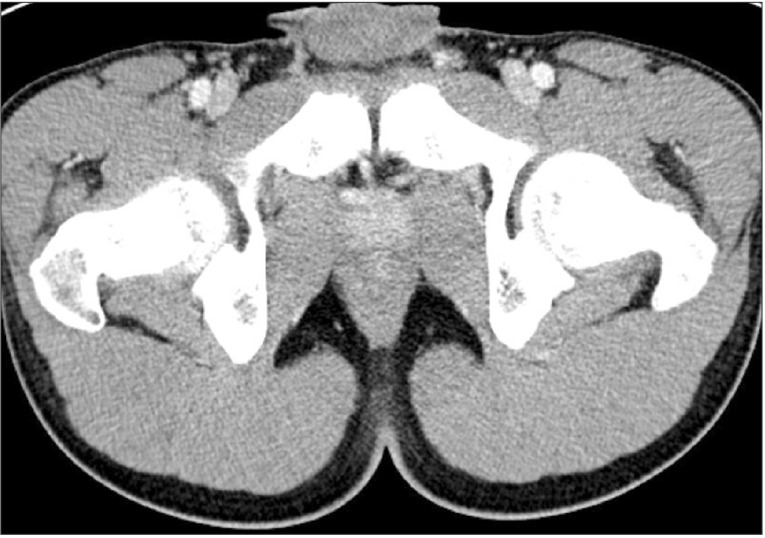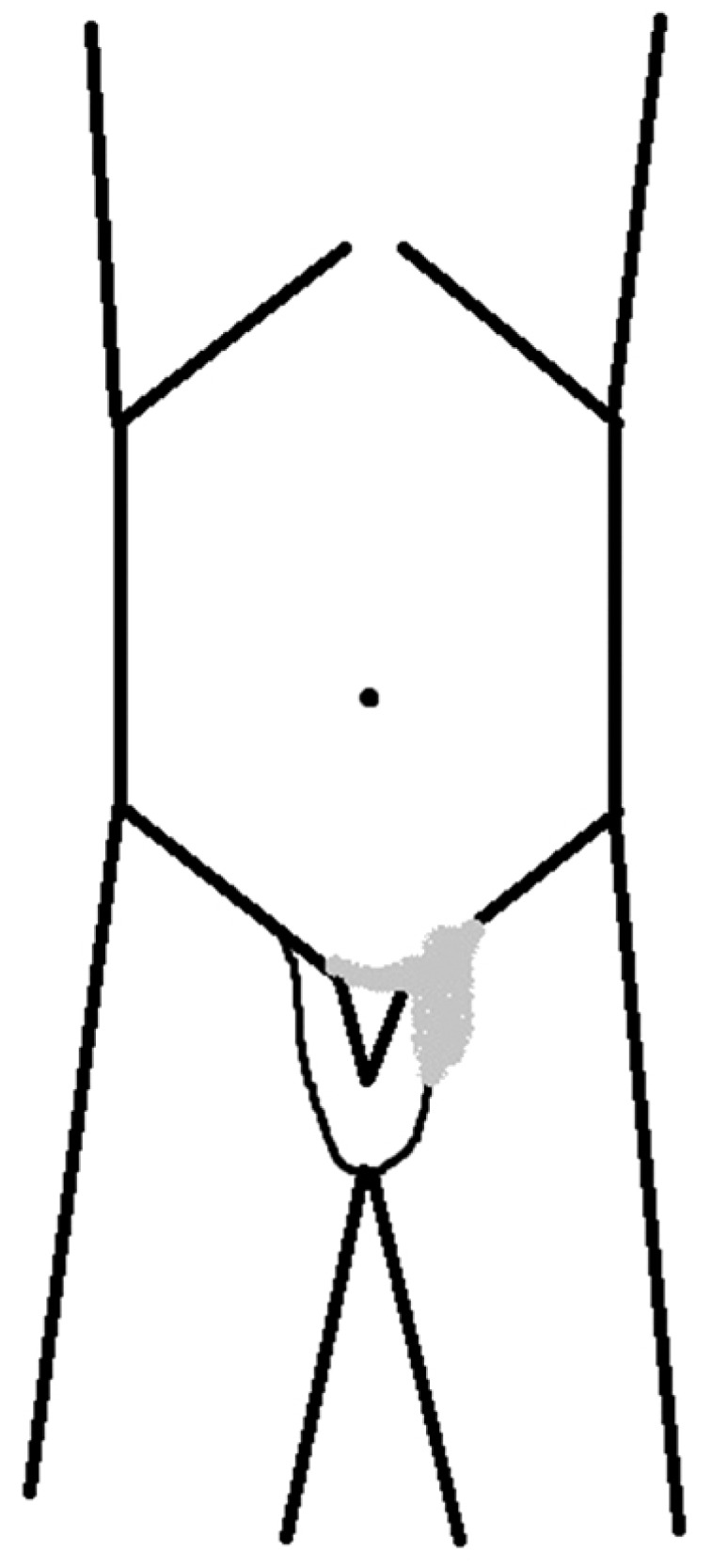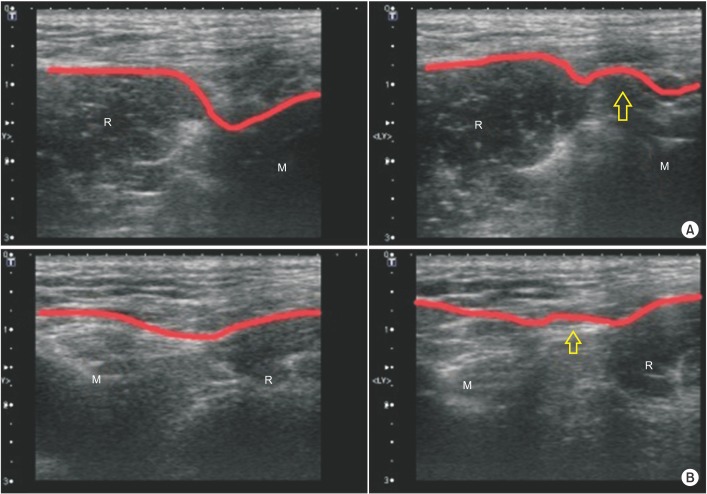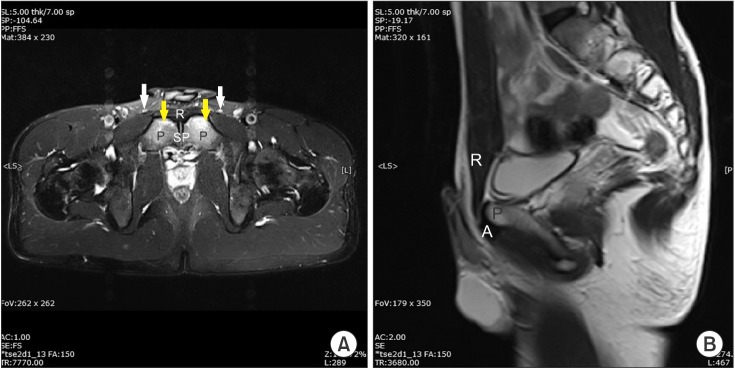Ann Rehabil Med.
2015 Dec;39(6):1038-1041. 10.5535/arm.2015.39.6.1038.
Diagnosis of Groin Pain Associated With Sports Hernia Using Dynamic Ultrasound and Physical Examination: A Case Report
- Affiliations
-
- 1Department of Physical Medicine and Rehabilitation, Dongguk University College of Medicine, Goyang, Korea. rusl98@hanmail.net
- KMID: 2165633
- DOI: http://doi.org/10.5535/arm.2015.39.6.1038
Abstract
- Groin pain in athletes is a complex diagnostic and therapeutic challenge. Sports hernia is one of the common causes of groin pain. We report a case of sports hernia, initially presented as groin pain and aggravated by sports activity. A 19-year-old soccer player visited the outpatient department of general surgery and was referred to the rehabilitation center due to no abnormalities detected in the abdomen and pelvis by computed tomography. An incipient direct bulge of the posterior inguinal wall was detected with dynamic ultrasound when abdominal tension was induced by raising both legs during a full inhalation. Surgery was performed and preoperatively both groins showed the presence of inguinal hernia. Diagnosing sports hernia is very challenging. Through careful history documentation and physical examination followed by dynamic ultrasonography, we identified his posterior inguinal wall deficiency for early management.
Keyword
MeSH Terms
Figure
Reference
-
2. Brown A, Abrahams S, Remedios D, Chadwick SJ. Sports hernia: a clinical update. Br J Gen Pract. 2013; 63:e235–e237. PMID: 23561792.
Article3. Muschaweck U, Berger LM. Sportsmen's groin-diagnostic approach and treatment with the minimal repair technique: a single-center uncontrolled clinical review. Sports Health. 2010; 2:216–221. PMID: 23015941.
Article4. Orchard JW, Read JW, Neophyton J, Garlick D. Groin pain associated with ultrasound finding of inguinal canal posterior wall deficiency in Australian Rules footballers. Br J Sports Med. 1998; 32:134–139. PMID: 9631220.
Article5. Jain M, Tantia O, Sasmal P, Khanna S, Sen B. Chronic groin pain in athletes: sportsman's hernia with bilateral femoral hernia. Indian J Surg. 2010; 72:343–346. PMID: 21938201.
Article6. Hackney RG. The sports hernia: a cause of chronic groin pain. Br J Sports Med. 1993; 27:58–62. PMID: 8457816.
Article7. Woodward JS, Parker A, Macdonald RM. Non-surgical treatment of a professional hockey player with the signs and symptoms of sports hernia: a case report. Int J Sports Phys Ther. 2012; 7:85–100. PMID: 22319682.
- Full Text Links
- Actions
-
Cited
- CITED
-
- Close
- Share
- Similar articles
-
- The Ultrasound Diagnosis of Round Ligament Varices That Mimicked Inguinal Hernias During Pregnancy: A Case Report
- Effectiveness of Active Rehabilitation Program on Sports Hernia: Randomized Control Trial
- Groin Hernia
- Groin and buttock claudication associated with vascular origin due to chronic occlusion of internal iliac artery: A case report
- Round ligament varicosities mimicking inguinal hernia in pregnancy





